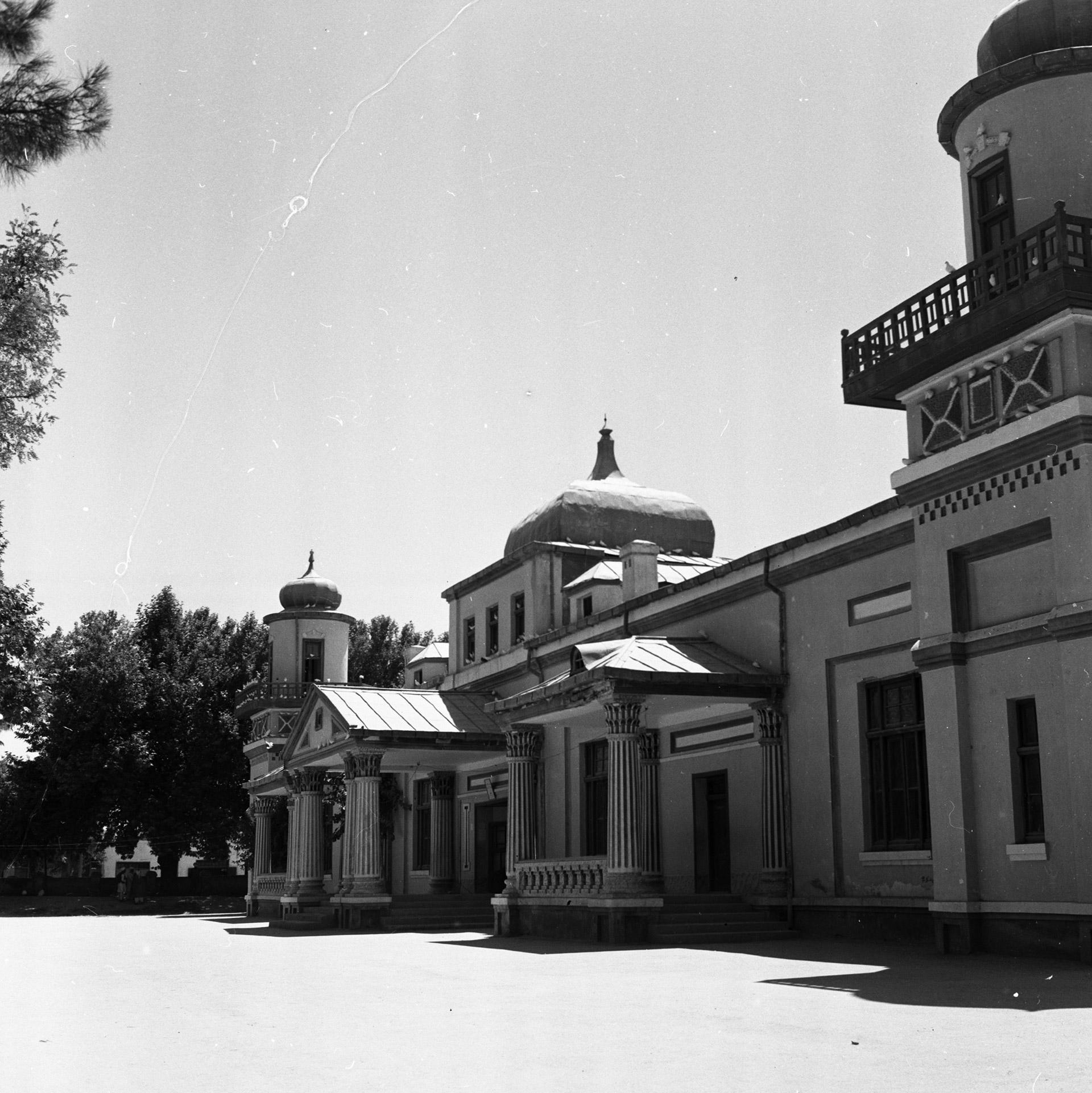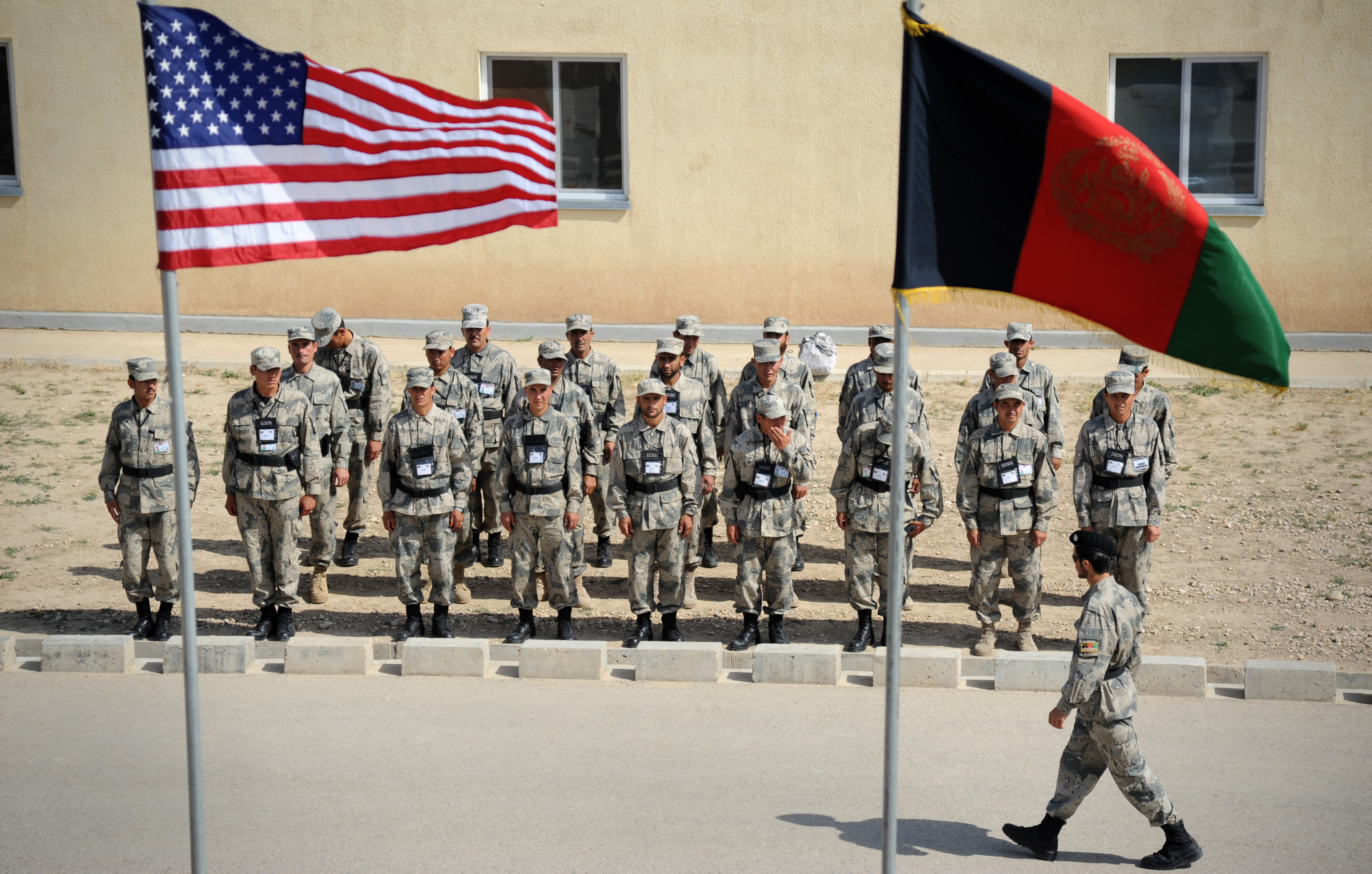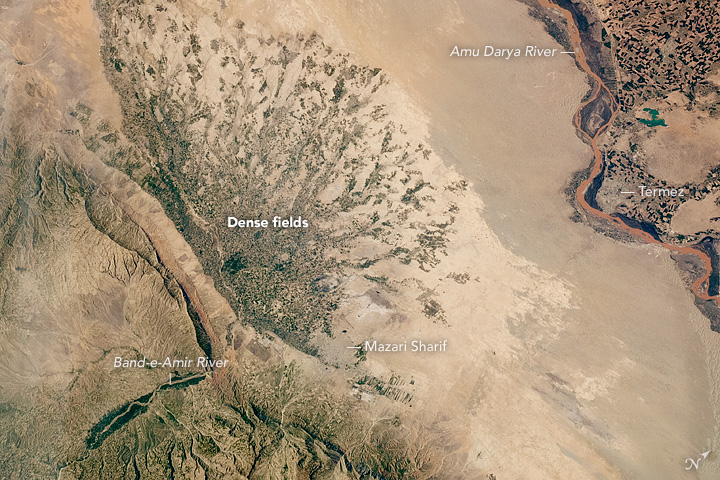|
Sheberghan
Sheberghān or Shaburghān ( Uzbek, Pashto, fa, شبرغان), also spelled ''Shebirghan'' and ''Shibarghan'', is the capital city of the Jowzjan Province in northern Afghanistan. The city of Sheberghan has a population of 175,599. It has four districts and a total land area of 7,335 hectares. The total number of dwellings in Sheberghān is 19,511. In 2021, the Taliban gained control of the city during the 2021 Taliban offensive. Location Sheberghān is located along the Sari Pul River banks, about west of Mazar-i-Sharif on the national primary ring road that connects Kabul, Puli Khumri, Mazar-i-Sharif, Sheberghān, Maymana, Herat, Kandahar, Ghazni, and Maidan Shar. Sheberghān airport is situated between Sheberghān and Aqcha. Etymology The city's name is a corruption of its classical Persian name, Shaporgân, meaning " ingShapur's town". Shapur was the name of two Sasanian kings, both of whom built a great number of cities. However, Shapur I was the governor of the ... [...More Info...] [...Related Items...] OR: [Wikipedia] [Google] [Baidu] |
Sheberghan Airport
Sheberghan Airfield is located in the Jowzjan Province in the northwest part of Afghanistan. The airfield is located in a plain adjacent to a river, northeast of Sheberghan, west of Aqchah, and east of Andkhoy. Facilities The airport resides at an elevation of above mean sea level. It has two parallel runways: 06L/24R with an asphalt surface measuring and 06R/24L with a gravel Gravel is a loose aggregation of rock fragments. Gravel occurs naturally throughout the world as a result of sedimentary and erosive geologic processes; it is also produced in large quantities commercially as crushed stone. Gravel is classifi ... surface measuring . The downward sloping runway is gravel base with a small cement run-up pad at the south end. The runway is slightly damaged. There aren't any facilities. See also * List of airports in Afghanistan References External links * Airport record for Sheberghan Airfieldat Landings.com. Airports in Afghanistan Jowzjan ... [...More Info...] [...Related Items...] OR: [Wikipedia] [Google] [Baidu] |
Jowzjan Province
Jowzjan, sometimes spelled Jawzjan or Jozjan (Dari: ), is one of the thirty-four provinces of Afghanistan, located in the north of the country bordering neighboring Turkmenistan. The province is divided into 11 districts and contains hundreds of villages. It has a population of about 613,481, which is multi-ethnic and mostly agriculturalists. Sheberghan is the capital of Jozjan province. History The province is named after the early medieval region and principality of Juzjan. Between the early 16th century and mid-18th century, the area was ruled by the Khanate of Bukhara. It was conquered by Ahmad Shah Durrani and became part of the Durrani Empire in or about 1750, which formed to the modern state of Afghanistan. The area was untouched by the British during the three Anglo-Afghan wars that were fought in the 19th and 20th centuries. Recent history Following a series of changing allegiances and falling out with Uzbek warlord Abdul Malik Pahlawan in 1997, the Taliban withdrew f ... [...More Info...] [...Related Items...] OR: [Wikipedia] [Google] [Baidu] |
2021 Taliban Offensive
A military offensive by the Taliban insurgent group and other allied militants led to the fall of the Islamic Republic of Afghanistan based in Kabul and marked the end of the nearly 20-year-old War in Afghanistan, that had begun following the United States invasion of the country. The Taliban victory had widespread domestic and international ramifications regarding human rights and proliferation of terrorism. The offensive included a continuation of the bottom-up succession of negotiated or paid surrenders to the Taliban from the village level upwards that started following the February 2020 US–Taliban deal. The offensive began on 1 May 2021, coinciding with the withdrawal of the United States's 2,500 troops in Afghanistan, and those belonging to other international allies. Large numbers of armed civilians, including women, volunteered with the Afghan Army in defense, while some former warlords notably Ismail Khan were also recruited. Despite this, the Taliban managed to ... [...More Info...] [...Related Items...] OR: [Wikipedia] [Google] [Baidu] |
Aqcha
Aqcha or Akcha ( Persian spelling: آقچه), is a city in northern Afghanistan. It is located approximately east of Sheberghan and west of Mazar-i-Sharif. It serves as the center of the Aqcha District of Afghanistan's Jowzjan Province. The town is situated a few kilometers north of the main Sheberghan-Mazar-i-Sharif road called ''Aqyol'' (meaning ''White Road'' in most Turkic languages). The population of the town is around 50,000 people, the majority of which consists mostly of ethnic Turkmens and Uzbeks. Aqcha is known for the traditional carpets and rugs that are made in the area. The predominant designs being the Turkmen, Bukhara, and Fil Pah ( fa, فیل پا; literally: Elephant's Foot) designs. At the beginning of the 19th century, Aqcha belonged to Bukhara under Shah Murad, but in 1855 it was recovered by Dost Mohammad Khan, when it became a khanate within the province of Afghan Turkestan. At the beginning of the 20th century, it was protected by a mud wall a ... [...More Info...] [...Related Items...] OR: [Wikipedia] [Google] [Baidu] |
Sari Pul River
The Sari Pul River is a river in northern Afghanistan originating in southwestern Sar-e Pol Province. It flows north and is joined by a major tributary from the east just south of the provincial capital, Sar-e Pol. It continues north past the town of Sar-e Pol and into Jowzjan Province. It flows past Sheberghan into the edge of the Karakum Desert where it dries up. In prehistoric times it flowed into the Amu Darya The Amu Darya, tk, Amyderýa/ uz, Amudaryo// tg, Амударё, Amudaryo ps, , tr, Ceyhun / Amu Derya grc, Ὦξος, Ôxos (also called the Amu, Amo River and historically known by its Latin name or Greek ) is a major river in Central Asi .... There are irrigation canals that spread the water out around Sheberghan. [...More Info...] [...Related Items...] OR: [Wikipedia] [Google] [Baidu] |
Mazar-i-Sharif
, official_name = , settlement_type = City , image_skyline = , pushpin_map = Afghanistan#Bactria#West Asia , pushpin_label = Mazar-i-Sharif , pushpin_label_position = bottom , pushpin_mapsize = , pushpin_relief = yes , pushpin_map_caption = Location in Afghanistan , coordinates = , subdivision_type = Country , subdivision_name = Afghanistan , subdivision_type1 = Province , subdivision_type2 = District , subdivision_name1 = Balkh Province , subdivision_name2 = Mazar-i-Sharif District , established_title = , established_date = , leader_title = Mayor , leader_name = Abdullhaq Khurami , area_total_km2 = , area_land_km2 ... [...More Info...] [...Related Items...] OR: [Wikipedia] [Google] [Baidu] |
Taliban
The Taliban (; ps, طالبان, ṭālibān, lit=students or 'seekers'), which also refers to itself by its state name, the Islamic Emirate of Afghanistan, is a Deobandi Islamic fundamentalist, militant Islamist, jihadist, and Pashtun nationalist political movement in Afghanistan. It ruled approximately three-quarters of the country from 1996 to 2001, before being overthrown following the United States invasion. It recaptured Kabul on 15 August 2021 after nearly 20 years of insurgency, and currently controls all of the country, although its government has not yet been recognized by any country. The Taliban government has been criticized for restricting human rights in Afghanistan, including the right of women and girls to work and to have an education. The Taliban emerged in September 1994 as one of the prominent factions in the Afghan Civil War and largely consisted of students () from the Pashtun areas of eastern and southern Afghanistan who had been educa ... [...More Info...] [...Related Items...] OR: [Wikipedia] [Google] [Baidu] |
Provinces Of Afghanistan
Afghanistan is divided into 34 provinces (, '' wilåyat''). The provinces of Afghanistan are the primary administrative divisions. Each province encompasses a number of districts or usually over 1,000 villages. Provincial governors played a critical role in the reconstruction of the Afghan state following the creation of the new government under Hamid Karzai. According to international security scholar Dipali Mukhopadhyay, many of the provincial governors of the western-backed government were former warlords who were incorporated into the political system. Provinces of Afghanistan Regions of Afghanistan UN Regions Former provinces of Afghanistan During Afghanistan's history it had a number of provinces in it. It started out as just Kabul, Herat, Qandahar, and Balkh but the number of provinces increased and by 1880 the provinces consisted of Balkh, Herat, Qandahar, Ghazni, Jalalabad, and Kabul. * Southern Province – dissolved in 1964 to create Paktia Provi ... [...More Info...] [...Related Items...] OR: [Wikipedia] [Google] [Baidu] |
Bishapur
Bishapur (Middle Persian: ''Bay-Šāpūr''; fa, بیشاپور}, ''Bishâpûr'') was an ancient city in Sasanid Persia (Iran) on the ancient road between Persis and Elam. The road linked the Sassanid capitals Estakhr (very close to Persepolis) and Ctesiphon. It is located south of modern Faliyan in the Kazerun County of Pars Province, Iran. Bishapur was built near a river crossing and at the same site there is also a fort with rock-cut reservoirs and a river valley with six Sassanid rock reliefs. The most important point about this city, is the combination of Persian and Roman art and architecture that hadn't been seen before Bishapur construction. Before Bishapour was built, almost all the main cities in Persia/Iran had a circular shape like the old city in Firuzabad or Darab. Bishapour is the first Persian city with vertical and horizontal streets. Also in the city, especially in interior design, we can see tile work that's adapted from Roman Art. History The nam ... [...More Info...] [...Related Items...] OR: [Wikipedia] [Google] [Baidu] |
Nishapur
Nishapur or officially Romanized as Neyshabur ( fa, ;Or also "نیشاپور" which is closer to its original and historic meaning though it is less commonly used by modern native Persian speakers. In Persian poetry, the name of this city is written and pronounced as "نِشابور" (without the usage of "پ" or "ب"). In modern times and among the general public and the Persian mass media, "نیشابور" is the most commonly used style of pronunciation and spelling of this city though "نیشاپور" is also correct. Nišâpur, Nişapur, Nīshābūr, or Neyshapur are also the other Romanizations of this city. from Middle Persian ''"New-Shapuhr"'', meaning: "The New City of Shapur", "The Fair Shapur", or "The Perfect built of Shapur") is the second-largest city of Razavi Khorasan Province in the Northeast of Iran. Nishapur is situated in a fertile plain at the foot of Binalud Mountain Range and has been the historic capital of the Western Quarter of Greater Khorasan, t ... [...More Info...] [...Related Items...] OR: [Wikipedia] [Google] [Baidu] |
Peshawar
Peshawar (; ps, پېښور ; hnd, ; ; ur, ) is the sixth most populous city in Pakistan, with a population of over 2.3 million. It is situated in the north-west of the country, close to the International border with Afghanistan. It is the capital of the province of Khyber Pakhtunkhwa, where it is the largest city. Peshawar is primarily populated by Pashtuns, who comprise the second-largest ethnic group in the country. Situated in the Valley of Peshawar, a broad area situated east of the historic Khyber Pass, Peshawar's recorded history dates back to at least 539 BCE, making it one of the oldest cities in South Asia. Peshawer is among the oldest continuously inhabited cities of the country. The area encompassing modern-day Peshawar is mentioned in Vedic scriptures; it served as the capital of the Kushan Empire during the rule of Kanishka and was home to the Kanishka Stupa, which was among the tallest buildings in the ancient world. Peshawar was then ruled by the Hephth ... [...More Info...] [...Related Items...] OR: [Wikipedia] [Google] [Baidu] |
Uzbeks
The Uzbeks ( uz, , , , ) are a Turkic peoples, Turkic ethnic group native to the wider Central Asia, Central Asian region, being among the largest Turkic ethnic group in the area. They comprise the majority population of Uzbekistan, next to Kazakhs, Kazakh and Karakalpaks, Karakalpak minorities, and are also found as a minority group in: Afghanistan, Pakistan Tajikistan, Kyrgyzstan, Kazakhstan, Turkmenistan, Russia, and China. Uzbek diaspora communities also exist in Turkey, Saudi Arabia, United States, Ukraine, and other countries. Etymology The origin of the word ''Uzbek'' still remains disputed. One view holds that it is eponymously named after Oghuz Khagan, also known as ''Oghuz Beg'', became the word ''Uzbek''.A. H. Keane, A. Hingston Quiggin, A. C. Haddon, Man: Past and Present, p.312, Cambridge University Press, 2011, Google Books, quoted: "Who take their name from a mythical Uz-beg, Prince Uz (beg in Turki=a chief, or hereditary ruler)." Another theory states that the ... [...More Info...] [...Related Items...] OR: [Wikipedia] [Google] [Baidu] |








.jpg)